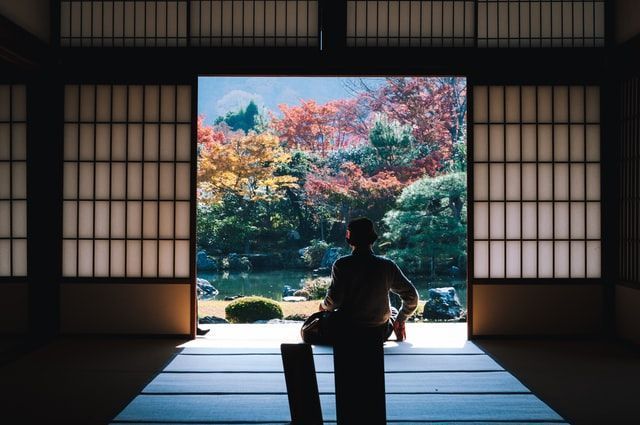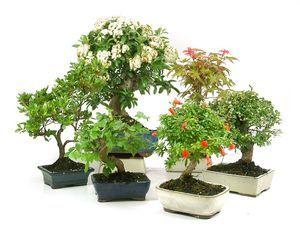Myths and legends of bonsai

In all the activities we do in life, we always find myths and legends, to such an extent that, sometimes, myth and reality are blurred. Some are justified, others we do not know where they came from. Perhaps some myth or legend will never be solved (you can ask Nessy = Name of the Loch Ness Monster). Those that are resolved, are the myths or legends about the art of bonsai. Here I present to you the most common ones.
Let’s play to “True or False”…
1. The bonsai is of Japanese origin.
False: The bonsai first originated in China. We have the first notions of this art through paintings and poems that talked about it. Reason why we can date it between the years 221-206 a. c. The monks began to make small miniature landscapes, reminding them of their origins. They learned to grow these trees in pots and to do their maintenance, learning the first techniques. Then with the wars and the migration of the monks to Japan during the Kamakura period (780 years ago) the Japanese copied this art and from that moment a quite characteristic and world-famous Japanese style emerged.
2. Bonsai are indoor trees
False: Bonsai are trees and as such should be located outside, but there are trees of tropical and subtropical origin that can adapt to the interior environment of our houses. These species need more or less constant temperature and humidity values and cannot withstand sudden changes in temperature. These trees are the so called indoor bonsai. They are, among others, Ficus, Zelkovas, Carmonas, Malpighias, etc.
3. Caring for the bonsai is very difficult. They are very fragile
False, its botanical care is very simple. Like its older brothers, trees in nature, every bonsai needs three things: air, water, and plenty of sunlight. But whatever it is, indoor or outdoor, they both need to be given sunlight, they need air in their substrate, and they need us to supply water through irrigation. The maintenance of your bonsai what it’s looking for is to supply these three elements, so that your tree is healthy and robust.
How are you doing so far, have you got it right …? I have other myths and legends for you.
4. Bonsai is only for ancient Japanese masters who know hidden and magical techniques only within the reach of a few enlightened ones.
False: We can all make bonsai and good bonsai. Let me explain my case. I started making bonsai, because I saw a Karate Kid movie, where Sensei Miyagi had some very small trees that he took care of. I had no knowledge of horticulture, botany, or art. I joined an association; I began to read specialized magazines such as the Bonsai Passion and books by other authors. I started to practice and now I have developed the necessary knowledge to keep a bonsai alive, to work it and turn it into a work of art. I mean if I could do it, anyone can do it, including you …
5. The bonsai needs us to work with it during the 4 seasons of the year.
True: The wonderful thing about bonsai is that it is a living art, so your tree will change with nature and with the passing of the seasons. In each season there are jobs that are better to do because of how the tree develops in that season. The best thing is to make a work calendar for you to enjoy, keep it tidy and your bonsai receives the affection corresponding to each season of the year.
6. The bonsai suffers when I cut off a twig
False: The bonsai does not suffer, otherwise imagine the potato’s suffering when we make chips…. The bonsai does not suffer because it does not have nerves, it does not have nerve endings and therefore it cannot feel any pain. The tree is one of the most efficient living being on the planet and it responds to the stimuli it receives. If the stimuli are correct (good watering, abundant light, adequate pruning, correct transplanting), the tree will respond phenomenally. But if the stimuli are bad, the tree will respond poorly and it could even die.
7. The bonsai is a mature tree like the others? Or is it a dwarf tree?
Well, it’s True … the first question.
Bonsai is a tree that grows and matures just like in nature, except that with the reduction techniques applied, the tree is smaller in size, but botanically it is just as mature. It grows, flourishes, fructifies, develops, all the same as other trees. Bonsai is not a dwarf tree.
How are you doing so far?… Now the last one…. The million dollars question……
8. Bonsai only come from Japan and China
False: Bonsai can come from anywhere in the world, as there are trees everywhere. The vegetal world is very wide and most of the trees can be adequate to turn them into bonsai, from our Mediterranean wonders such as the Olive tree, passing through the fruit trees, such as the prunes, orange and pomegranates trees, the Pyracantha. Tropical and subtropical species such as Ficus, Zelkovas, Carmonas, passing through the Japanese, Chinese and Korean, Japanese Maple, Japanese Beech, Trident Maple, Chinese Elm, European Beech to the most common such as conifers (Pines , Juniper, Yew tree, etc.) we have a more than enough variety to enjoy this wonderful art.

How did you do in the game? Sure well! If you are one of those who follow us, for sure you already knew some of the answers. We will continue looking for more myths and legends of bonsai to continue discovering and sharing them with you. Together on this wonderful path called “Bonsai” …
Until next game …
You may also be interested in…
About the Author
Luis Alejandro Herrera
Spreading the art of bonsai is his passion. As a reference in the Latin American bonsai world, Luis studied and participated as an instructor for more than 15 years within the Venezuelan Bonsai Society. He had the opportunity to expand his knowledge with great masters from the world of bonsai like Pedro Morales, Nacho Marín; and within the European school with the Italian teacher Salvatore Liporace. He managed to be in the first place of the Caracas 2016 New Talents Contest and successfully completed the master class of the European School of Bonsai in Puerto Rico. During his career he has been a permanent instructor of the Venezuelan Society of Bonsai.
Categories
Bonsai cultivation and care (54)
Bonsai gift (2)
Bonsai pests and diseases (6)
Bonsai repotting (3)
bonsai substrates (2)
bonsai tools (1)
Bonsai work (10)
Ceramic pots (3)
Chinese culture (2)
Chinese culture (1)
Corporative Mistral Bonsai (8)
Cuidados del bonsái (22)
Cultivo del bonsái (20)
Dead wood (2)
